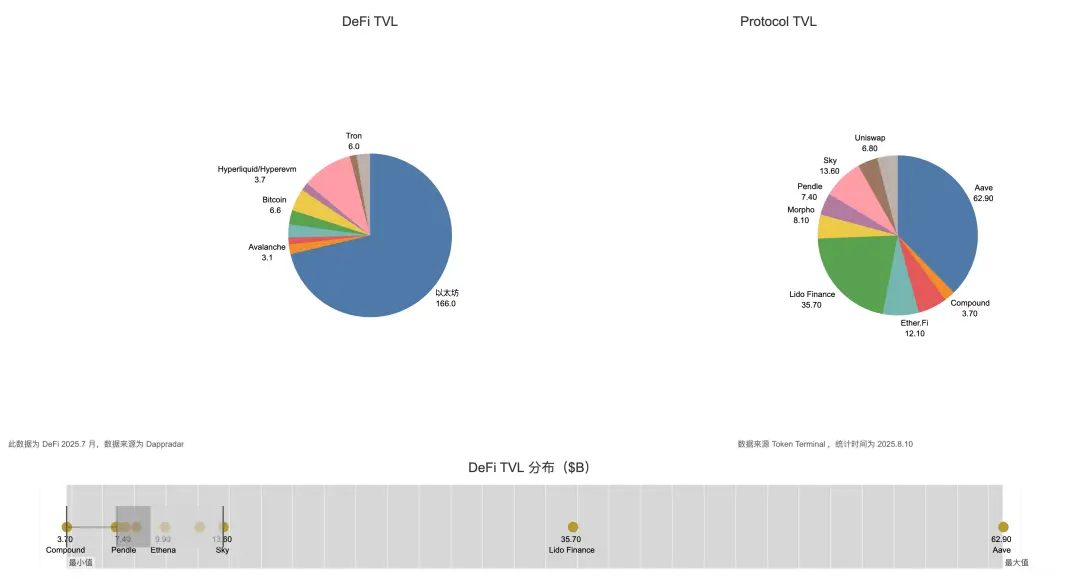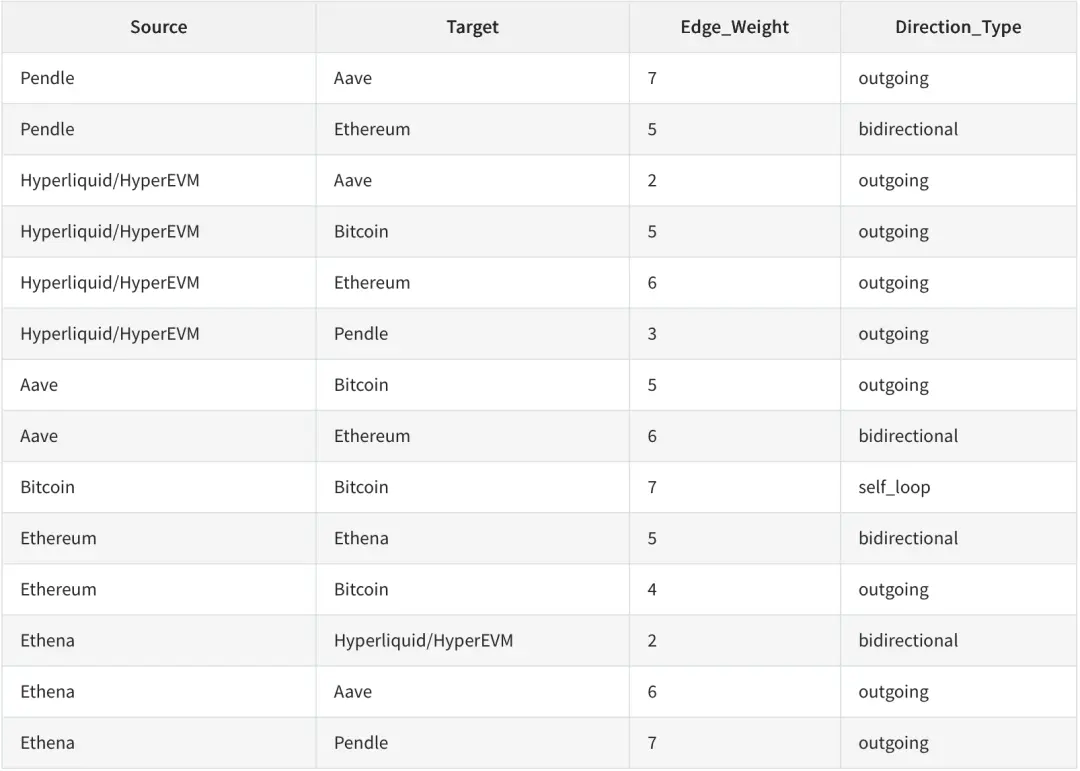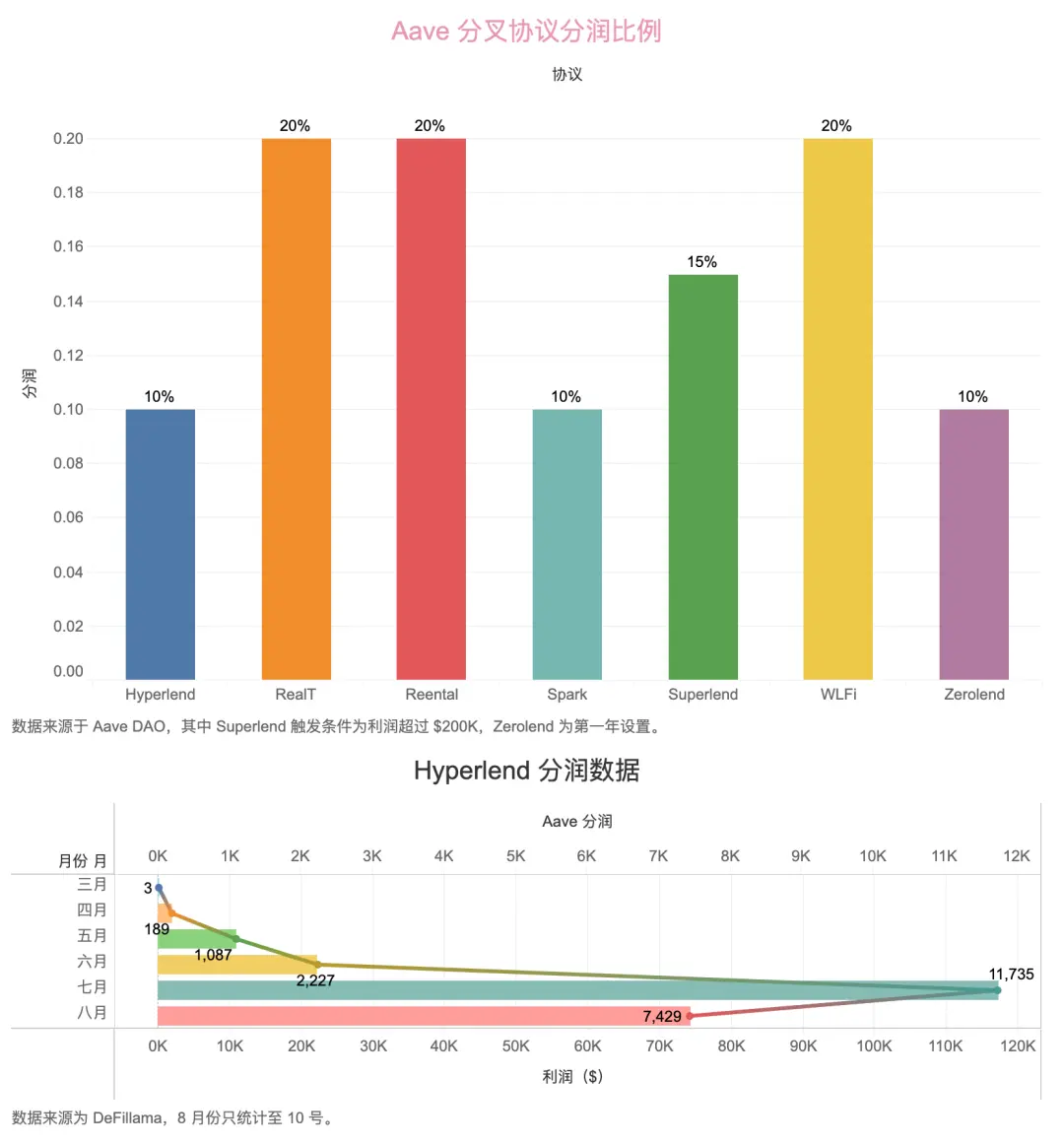Ethereum returns with DeFi, Aave/Pendle/Ethena makes circular lending a leverage amplifier. Compared to the on-chain stack based on ETH during DeFi Summer, the leverage rise curve supported by stablecoins like USDe is much gentler.
We may enter a warm long cycle, and the examination of on-chain protocols will be divided into two parts: first, it involves more asset types, as external liquidity will be more abundant under the Federal Reserve's interest rate cut expectations; second, it examines the limit values of leverage multiples, corresponding to the process of safe deleveraging, that is, how individuals can exit safely and how bull markets will end.
This article focuses on the interconnection of on-chain protocols; the examination of external funds can refer to the previous article: New Changes in Cryptocurrency Power Structures: Custodian Anchorage's Iron Vault
Six crypto protocols: the interaction between ecosystem and tokens
There are countless on-chain protocols and assets, but under the 80/20 rule, we only need to focus on parameters such as TVL/transaction volume/token price. More precisely, we should focus on the few indispensable entities in the on-chain ecosystem, and then examine their relationships in the ecological network to balance individual importance, ecological connectivity, and the highest growth potential of new protocols.

Image description: DeFi TVL Overview Image source: @zuoyeweb3
In the composition of DeFi TVL, Ethereum accounted for over 60% of DeFi TVL in July, and Aave accounted for over 60% of Ethereum's ecological TVL. This is the 20% in the 80/20 rule; the remaining protocols must have strong connections with the two to be included as active beneficiaries.
With the flywheel of the three lending musketeers starting, the degree of association among Ethereum, Aave, Pendle, and Ethena goes without saying. Adding Bitcoin to the mix, WBTC, ETH, and USDT/USDC are the de facto DeFi base assets, but USDT/USDC, like Lido, only possess asset attributes and lack ecological value, while Plasma, Stablechain, etc. are just starting to compete.
To make a slight distinction, a protocol can have multiple values. For example, Bitcoin essentially only has asset value, meaning that everyone needs BTC, but no one knows how to utilize the Bitcoin ecosystem. This does not imply that BTCFi is a scam (just a precautionary statement).
ETH/Ethereum possesses dual value; everyone needs both ETH and the Ethereum network, including EVM and its extensive DeFi stack along with development facilities.
Based on further classification of assets and ecological value, we examine the degree to which various leading protocols are 'needed.' A needed asset attribute earns a point, and a needed ecological value earns another point. The following table can be summarized:

Pendle/Aave/Ethena/Ethereum/HyperEVM/Bitcoin are the six protocols with the strongest connections, where any two can couple with each other, needing at most one additional protocol or asset for linkage.
Let us explain a bit:
1. Ethena <> HyperEVM: USDe has been deployed to the HyperEVM ecosystem
2. Pendle <> HyperEVM: $kHYPE and $hbHYPE rank first and third in the trend chart
3. Aave <> HyperEVM: Hyperlend's TVL accounts for 25% of HyperEVM ($500M vs. $2B), which is a friendly fork of Aave, promising to share 10% of profits with Aave.
4. BTC/ETH are the two largest currencies in Hyperliquid's trading volume and can be deposited and withdrawn through Unit Protocol.
5. Pendle, Aave, and Ethena have already become one, but the asset attribute of USDe is recognized, while $ENA's ecological value is slightly inferior.
6. Pendle's new product Boros uses funding rates as the trading basis, with BTC and ETH contracts being the preferred choices.
7. Aave needs WBTC and various ETH types, such as staked ETH, especially since Ethereum's ecological value as infrastructure is required by Aave/Pendle/Ethena, serving as on-chain support for ETH prices.
8. The most unique aspect is that the Ethereum ecosystem requires BTC unidirectionally, while the Bitcoin ecosystem does not require any external assets.
9. Ethena has no relationship with Bitcoin/BTC
10. HyperEVM/Hyperliquid is the most 'proactive' external ecosystem, giving a strong sense of 'I am here to join this family.'
According to statistics, these are the six assets with the closest links. The introduction of any other ecosystem and tokens will require more assumption steps. For example, Lido, which has the second-highest TVL, has a weak relationship with Hyperliquid and Bitcoin, and after Pendle 'abandoned' LST assets to invest in YBS, Lido's ecological interconnection attribute within Ethereum will weaken.
We use the highest value of BTC at 7 as a basis to classify six types of assets into three types of nodes based on their influence on other protocols. Please note that this is not a depiction of their asset value, but a ranking of their importance within the ecosystem.

BTC/ETH are the strongest infrastructures. BTC excels in value attributes, while ETH's ecological position is unshakable. If we include Solana to calculate the linkage degree, we will find it is not as strong as Hyperliquid/HyperEVM's linkage to Ethereum. The core reason is Hyperliquid's trading attributes, which align better with the EVM ecosystem when combined with HyperEVM.
• Within Ethereum, there is insufficient interaction between Lido/Sky and the existing six protocols
• Outside of Ethereum, there is insufficient interaction between Solana/Aptos and the existing six protocols
However, Solana needs to support its own DEX to accommodate more external assets, which naturally adds an extra step to the required assumptions. SVM's compatibility with the EVM ecosystem will also be more challenging. In a word, everything on Solana must develop independently.
Image description: Connectionism Image source: @zuoyeweb3
However, within the relationship network, Ethereum's ecological synergy is the strongest. $1 of Ethena comes through hedging against ETH, and then enters Pendle and Aave for value circulation, with the Gas Fees generated becoming the value support for ETH.
Apart from Bitcoin naturally relying on BTC to complete its value self-circulation and self-flow, ETH is closest to a value closed loop, but this is a result of proactive action, while the combination of Hyperliquid/HyperEVM is still in progress. Whether it can achieve the linkage of transactions (Hyperliquid) + ecosystem (HyperEVM) and $HYPE remains to be seen.
This is a process of increasing entropy with more assumptions. BTC only needs itself, ETH needs the ecosystem and tokens, and $HYPE needs transactions, tokens, and the ecosystem.
Is there an end to the expansion of DeFi?
As mentioned earlier, Hyperlend needs to share profits with Aave. Aave's influence is not limited to this; in fact, Aave is the main character in this circular lending initiated by Pendle and Ethena, bearing the leverage role of the entire circular system.
Aave is the closest to becoming an on-chain infrastructure for Ethereum, not because its TVL is the highest, but due to safety and the amount of funds considered comprehensively. The safest way to initiate a lending model on any public chain and ecosystem is a compliant fork of Aave.

Image description: Aave and Hyperlend profit-sharing settings Image source: @zuoyeweb3
In the fork template of Hyperlend, a 10% profit sharing is basic, in addition, there is a distribution of 3.5% of its own tokens to Aave DAO and 1% to stAave holders, meaning Aave is selling itself as a service to various ecosystems, which is where its ecological value and token value are interconnected.
But it is not without competitors; Maple has already expanded to HyperEVM. New forms of lending protocols like Fluid and Morpho are also competing fiercely with new assets like YBS. As the strongest competitor to Ethereum's EVM ecosystem, HyperEVM may not always remain peaceful.
From a proactivity perspective, Bitcoin and HyperEVM are absolute extremes. HyperEVM is siphoning traditional trading types onto the chain through HIP3, connecting the liquidity of HyperCore and HyperEVM through CoreWriter, and supporting its own frontend agents through Builder Code.
Additionally, it utilizes Unit Protocol and Phantom to connect the funds of the Solana ecosystem, siphoning all on-chain liquidity. This is also a way to expand infrastructure.
To summarize:
• Pendle focuses on all types of assets that can be split, starting from fixed income to expand into the derivatives market beyond perpetual contracts, that is, the broadly defined interest rate swap market.
• Ethena, leveraging the DeFi circular lending model and treasury strategy, is building a third pole of stablecoins from $ENA and $USDe, $USDtb, where the basic uses of USDT/USDC remain trading and payment. USDe aims to become a risk-free asset in the DeFi space.
• Aave has already become the de facto lending infrastructure, its position is closely tied to Ethereum
• Bitcoin and Ethereum represent the limits of the blockchain economic system; their degree of expansion is the foundation for DeFi growth, that is, how much Bitcoin's scale can be migrated to DeFi and how much growth space DeFi still has.
• Hyperliquid/HyperEVM has already closely tied existing DeFi giants in the ecosystem, although its TVL is far less than Solana, its growth prospects are greater. The story of Solana is about defeating the EVM system from a public chain perspective.
Conclusion
The six crypto protocols examine the degree of interconnection among them, not that other protocols lack value, but high collaboration density will increase the freedom and utilization of funds exponentially, thus benefiting all stakeholders.
Of course, a loss will also entail losses for others, which necessitates examining DeFi's anchor change—from ETH to YBS's subsequent development. ETH, as a high-value asset, is more aggressive in terms of leverage, while YBS, like USDe, is naturally more price stable (not value-stable). DeFi legos based on it are more solid and theoretically allow for a gentler leverage and deleverage curve, excluding extreme decoupling scenarios.
The seats in the crypto pantheon are limited; new electors can only forge ahead, make connections with existing deities, and build the strongest protocol network to earn themselves a place.




